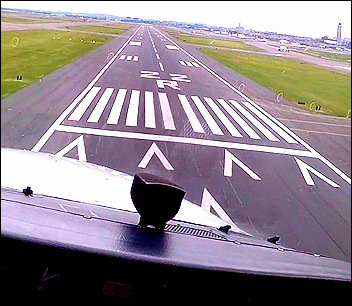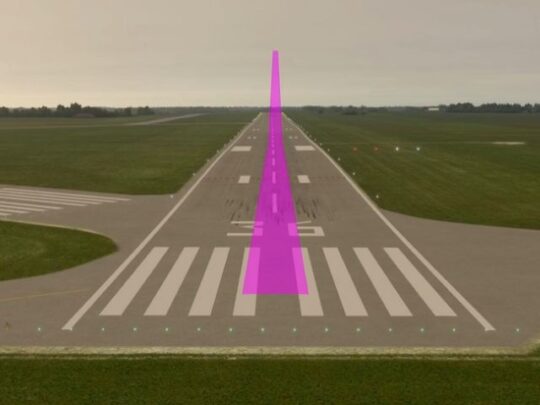Subscriber question:
"Landing at a big airport for the first time, Tower cleared me to land on Runway 6 but told me to hold short of Runway 19, which crossed my landing runway. How do they know I can do that? Am I required to accept it?" — Roy S.
John:
 “You were issued what is known as a LAHSO clearance. LAHSO is an acronym for Land and Hold Short Operations. These operations include landing and holding short of an intersecting runway, an intersecting taxiway, or some other designated point on a runway other than an intersecting runway or taxiway.
“You were issued what is known as a LAHSO clearance. LAHSO is an acronym for Land and Hold Short Operations. These operations include landing and holding short of an intersecting runway, an intersecting taxiway, or some other designated point on a runway other than an intersecting runway or taxiway.
You can accept a LAHSO clearance provided that you, as the pilot-in-command, can determine that the aircraft can safely land and stop within the Available Landing Distance (ALD). Realistically though, you probably would not have time to look up the data while flying the airplane and preparing for a landing. Therefore, you can always request the available distance from the Controller. Student pilots are not permitted to accept a LAHSO clearance.
There are several conditions that must be met in order for ATC to issue a LAHSO clearance:
- The controller must exchange traffic information to both aircraft involved and obtain an acknowledgment from each.
- The landing runway must be free from contaminants (ice, snow, water)
- The weather has to be basic VFR (1000-foot ceiling and 3 miles visibility)
- There can be no tailwind for the landing aircraft.
If you accept a LAHSO clearance, you must comply with it, just as any other ATC clearance, unless an amended clearance is obtained or an emergency occurs. A LAHSO clearance does not preclude a rejected landing.
You, as the pilot-in-command, have the final authority to accept or decline any land and hold short clearance. ATC expects you to decline a LAHSO clearance if it will compromise safety.”
Have you ever chosen to decline an ATC landing (or takeoff) clearance? If so, why?

